Are you ready to explore the breathtaking beauty of Montana? Well, before you embark on your adventure, let’s talk about something that might buzz its way into your plans: bug season.
Yes, I’m talking about those tiny creatures that can turn a peaceful hike into an itchy challenge. In this article, I’ll equip you with the knowledge you need to conquer even the peskiest of insects.
Now, when it comes to bugs, Montana is no stranger. From buzzing mosquitos to bothersome horse flies, these critters can put a damper on your outdoor activities.
First, let’s address the issue that’s probably been bugging you: the potential for itching bites and allergic reactions.
In this article, we’ll explore the main mosquito species in Montana, the chance of encountering aggressive mosquitos, and how to protect yourself with insect repellents and protective clothing.
If you’re planning a trip to Montana, if you’re a passionate outdoor adventurer, or if you simply despise those bloodsucking creatures, then you’re in the right place!
- Related article: How to Travel Montana
Get ready to conquer nature’s challengers, embrace the stunning landscapes, and make unforgettable memories in the land of the big sky.
When Does Montana’s Bug Season Occur?
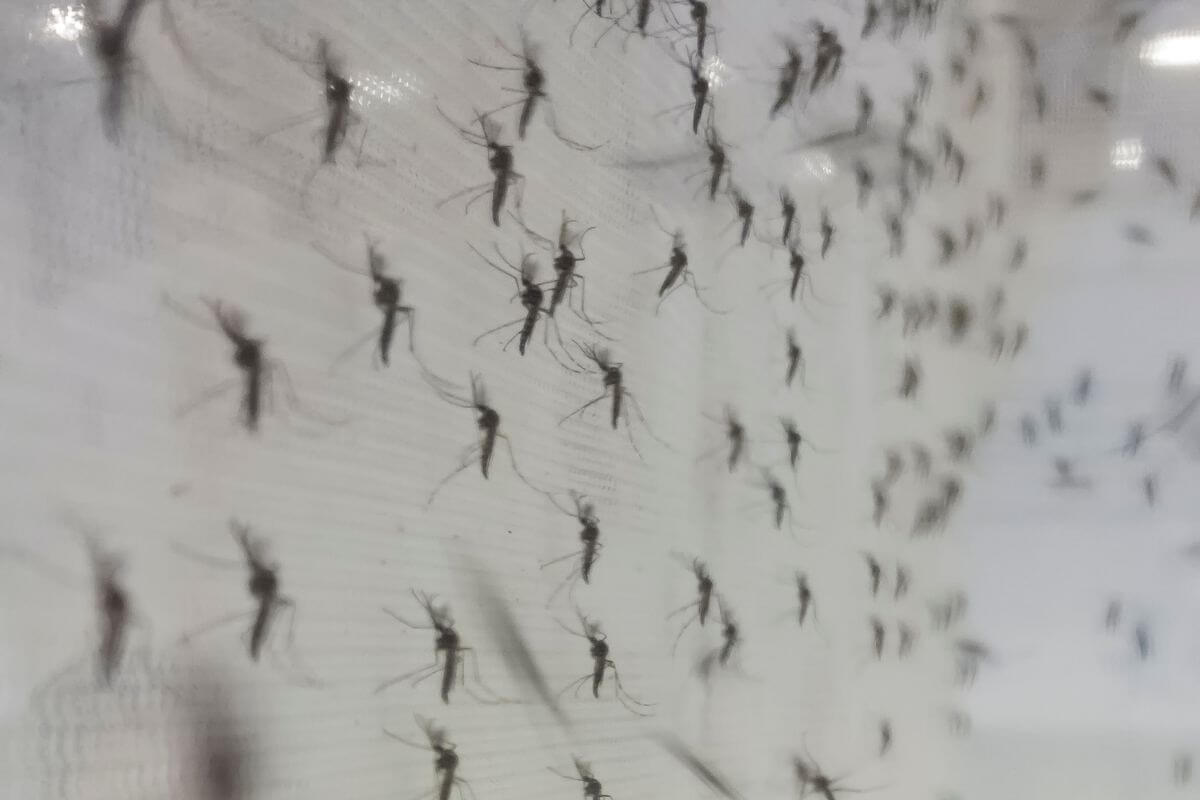
Montana’s bug season typically spans from May to September. However, due to its cooler climate, the bug season in Montana is brief compared to other states.
Montana is one of the lucky few states that undergoes the shortest mosquito seasons in the entire nation, including Washington, North Dakota, South Dakota, Minnesota, Wisconsin, and some others.
- Related: Best Time to Travel Montana
Montana’s Types of Bugs

When in Montana, stay mindful of the bugs you might encounter. From tiny ants to buzzing mosquitoes and everything in between, these critters are part of the natural ecosystem.
While you can find a comprehensive list in the Montana Insect Guide, we’ve narrowed it down to the top 12 prevalent household insects commonly encountered in the state:
- Ants – These tiny creatures often march into homes in search of food.
- Springtails and Pillbugs – These small, harmless arthropods are often found in damp areas.
- Mosquitoes – Montana’s brief mosquito season still manages to make its presence felt during the warmer months.
- Spiders – From the harmless to the venomous, spiders are a common sight indoors and outdoors.
- Bees, Wasps, and Hornets – While essential for pollination, these stinging insects can be unwelcome guests.
- Termites – The silent destroyers of wooden structures can be found in Montana.
- Cockroaches – These resilient pests can be a nuisance in homes and businesses.
- Bed Bugs and Fleas – Infestations of these blood-sucking insects can be a nightmare for homeowners.
- Flies – Common in the summer months, flies can be a major annoyance.
- Grasshoppers – While not a typical household pest, these hopping insects are part of Montana’s landscape.
- Boxelder Bugs – These insects often seek shelter indoors during the cooler months.
- Horse Flies – Known for painful bites, these large flies can be bothersome during the summer.
Montana Bug Season Effects
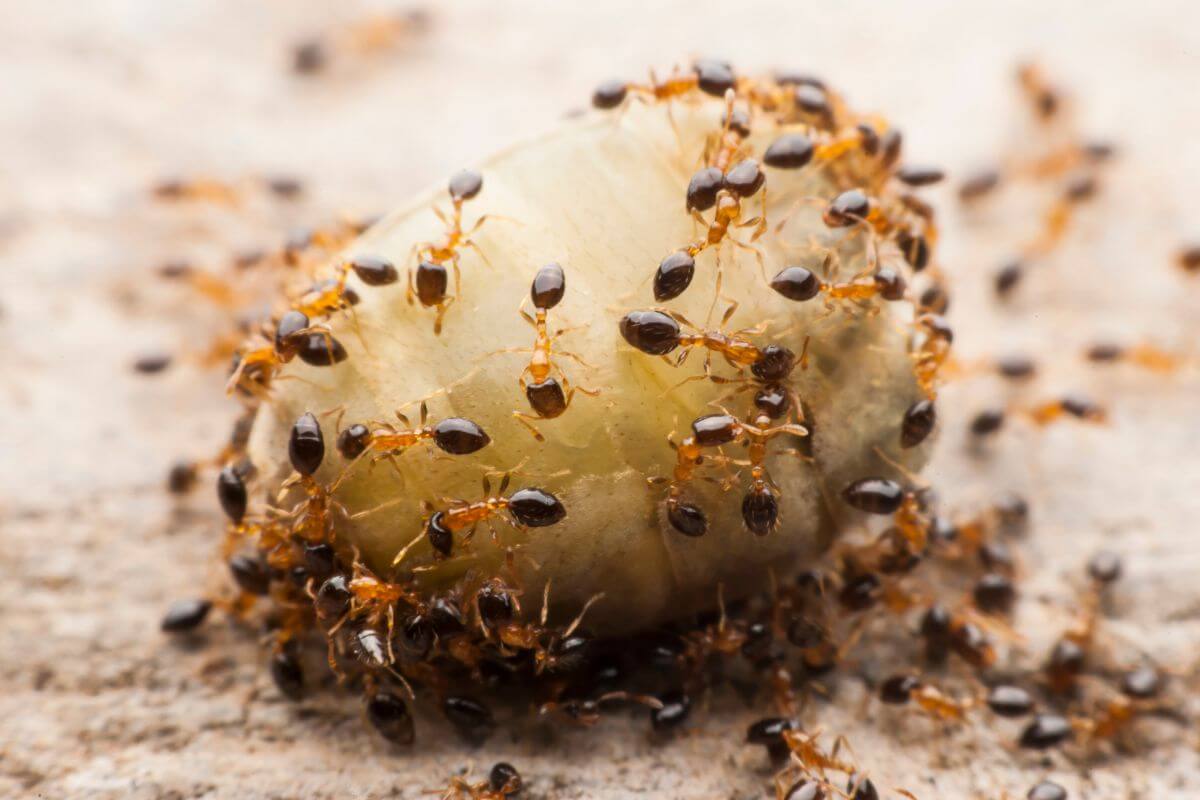
Montana’s bug season is an adventure in itself. From ants to mosquitoes, spiders to bees, there’s no shortage of insects around.
You’ll encounter ants scurrying for food and shelter, so keeping your picnic areas clean is a good idea. But the real challenge comes from the mosquitoes; they may be smaller, but they’re persistent.
Arm yourself with repellent and protective clothing to fend them off. Montana’s bug season is short but brings a variety of critters to your outdoor adventures, making them memorable.
Bug Season and Disease: The West Nile Virus
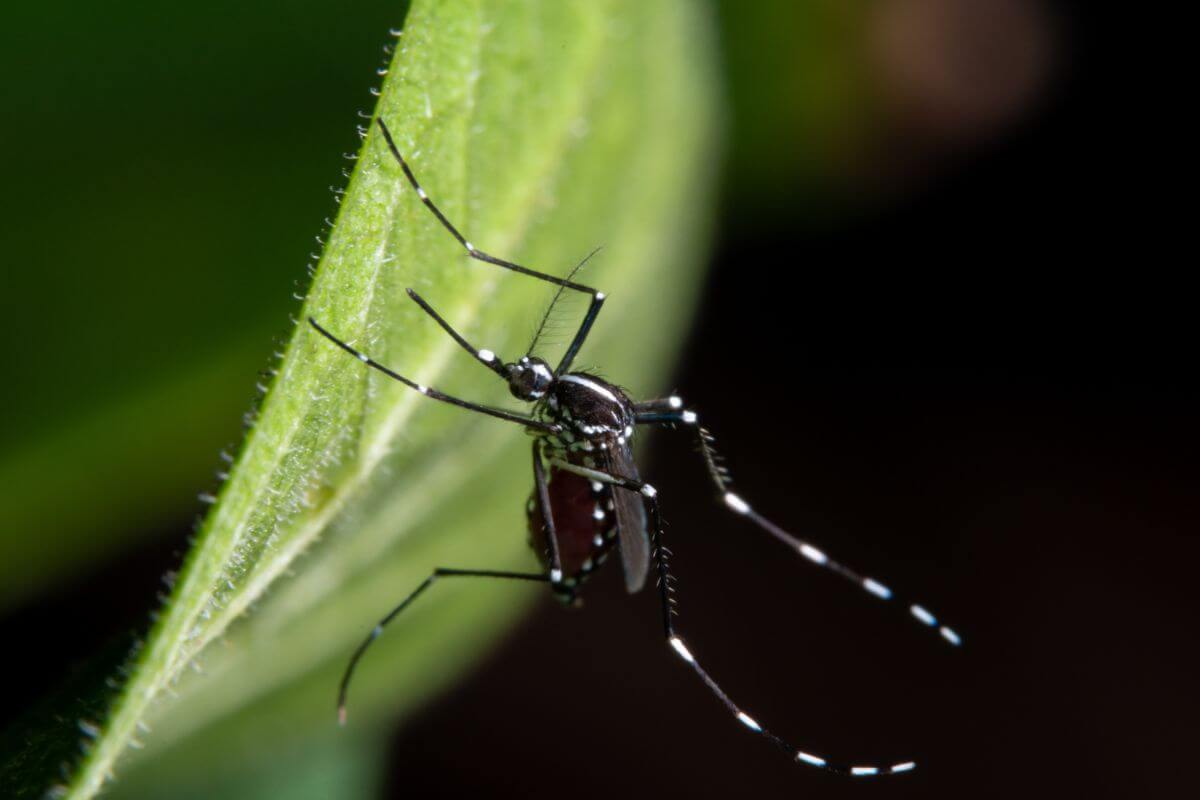
In Montana’s bug season, mosquitoes are the real troublemakers. They’re not just annoying; they can also carry the West Nile Virus (WNV), posing a serious health risk.
The WNV is primarily spread to humans through infected mosquitos. While there are no drugs for treating or vaccines for humans to prevent infection, there are steps to lower the chances of getting bitten.
4 Simple Steps to Prevent West Nile Virus Infection:
- Dodge Dawn and Dusk – Avoid being outdoors during dawn and dusk whenever you can.
- Dress Wisely – Wear protective clothing like long-sleeved shirts, long pants, socks, and closed-toe shoes. Choose light-colored, tightly woven fabrics to deter mosquitoes.
- Drain Standing Water – Eliminate or reduce stagnant water around your home to prevent mosquito breeding. Mosquitoes can lay their eggs in standing water, so regularly drain or remove it.
- Defend with DEET – Use insect repellents that contain DEET (N, N-diethyl-m-toluamide) or picaridin (KBR 3023).
It’s also important to be aware of the symptoms of West Nile Virus infection. The majority of infected individuals remain asymptomatic.
Roughly 20% may experience a fever along with other symptoms such as headache, body aches, joint pain, vomiting, diarrhea, rash, and fatigue. These symptoms may vary in severity from person to person.
Symptoms usually manifest within a period ranging from 3 to 14 days following the bite of an infected mosquito. In rare cases, less than 1%, severe neurological illness may occur, which can be fatal.
As of September of 2023, Montana WNV surveillance has identified WNV activity in 26 counties, with 15 human cases (11 neuroinvasive), 13 horse cases, and 36 mosquito pool positives.
In North America, it is recommended for horses to have vaccinations as protection, and is an essential standard of care against WNV.
Bug Season Health Effects
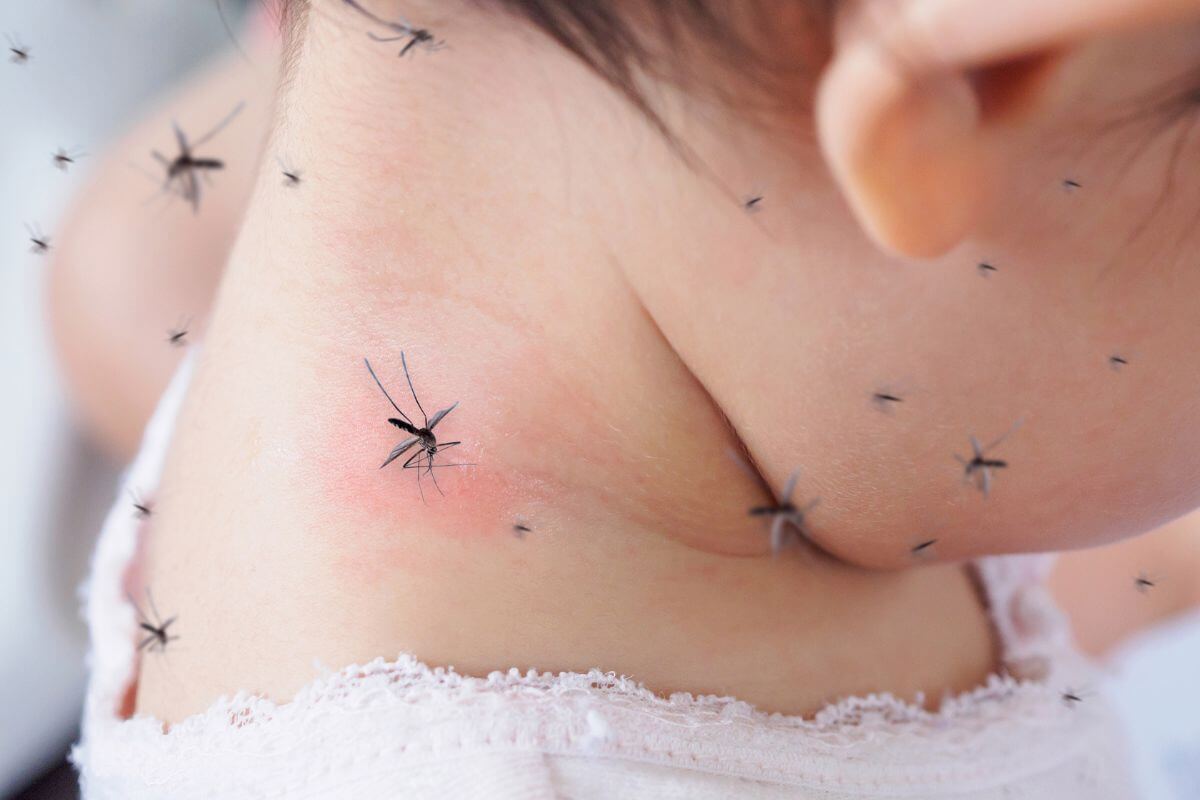
But while getting up close and personal with Montana’s flying fauna may be a rite of passage, no one wants to end their vacation covered in itchy bumps or, worse, suffering from a serious allergic reaction.
Bug season can bring along a variety of health effects that range from annoying to potentially serious.
Here’s a rundown of those bug-related health effects we need to keep an eye on:
- Annoyance and Blood Loss – Bugs like mosquitoes can be really irritating as they buzz around or land on people and animals, sometimes causing them to lose a bit of blood when they bite.
- Skin Problems – Some tiny creatures like scabies mites and chiggers can give us skin issues, making our skin itchy, causing hair loss, and making animals weaker.
- Larvae Invasion – Fly larvae rarely invade and eat into human bodies but commonly affect animals like livestock, potentially causing complications and infections.
- Toxic Bites and Stings – Bugs can bite or sting, introducing toxins into our bodies that can be painful and uncomfortable, such as spider bites, scorpion stings, or bites from ants, bees, and wasps.
- Allergic Reactions – Some people may have severe allergic reactions to bug bites ranging from mild skin irritation to life-threatening responses, sometimes due to bug-related substances in food.
- Fear of Bugs – Irrational fear of insects can cause discomfort, anxiety, hallucinations, and physical symptoms, sometimes leading to a mistaken belief in infestation.
- Disease Spread – Bugs spreading diseases by carrying germs is vital to grasp when managing and preventing illnesses like malaria and plague.
It is important to seek medical attention in the following cases:
- Severe Reactions – If you experience severe allergic reactions to bug bites or stings, including difficulty breathing, swelling, or anaphylaxis, seek immediate medical help.
- Suspected Mosquito-Borne Illnesses – If you suspect a mosquito-borne illness like malaria or Zika due to recent bug exposure, seek prompt medical attention for effective disease management.
Bug Season: Outdoor Activity Tips

Bug season in Montana can be a bit of a nuisance, but with a few simple tips, you can still enjoy your outdoor activities without being bothered by those pesky insects.
Incorporate these solutions to combat mosquito-related issues:
| Outdoor Activity Tips | Explanation |
|---|---|
| Eliminate Standing Water | Remove stagnant water sources around your home like water dishes, bird baths, plant saucers, leaky faucets, and gutters. Mosquitoes breed in stagnant water, and this helps reduce their populations. |
| Utilize Screens and Closed Doors | Use screens on windows and doors to keep mosquitoes from entering your home. Ensure screens are free of holes, and keep doors closed to prevent mosquitoes, which are attracted to body heat and CO2, from getting inside. |
| Keep a Well-Trimmed Yard | Maintain your yard by trimming shrubbery and managing overgrown areas to prevent ideal habitats for adult mosquitoes. Potted plants and tall grass can provide shelter for mosquitoes. |
| Reduce Still Water Sources | Mosquitoes can reproduce rapidly in still water, so reduce sources of standing water to protect your home. This, along with managing other favorable environments, helps prevent mosquito infestations. |
| Utilize Mosquito Repellents and Be Consistent | When outdoors, use effective insect repellants like “Off!” to prevent mosquito bites. Repellents mask our scent from mosquitoes. Candles aren’t as effective as repellants, but they are better than nothing. Focus on these scents: citronella, lavender, lemongrass, cinnamon, peppermint, cedarwood, cloves, rosemary, eucalyptus, and catnip. |
| Keep a Nose on the Smells | Mosquitoes are sensitive to certain scents. They’re attracted to fragrant floral scents like perfumes, lotions, soaps, and even body wash. Alcohol, blood, and sweat will also invite mosquitoes to draw near. It’s best to stay unscented and to mask your smell. |
| Be Aware of Mosquito Activity | Stay vigilant about mosquito activity patterns, take preventive measures at home, use repellents consistently, and report excessive mosquito populations to your local health department for control. |
Montana Bug Season Final Thoughts
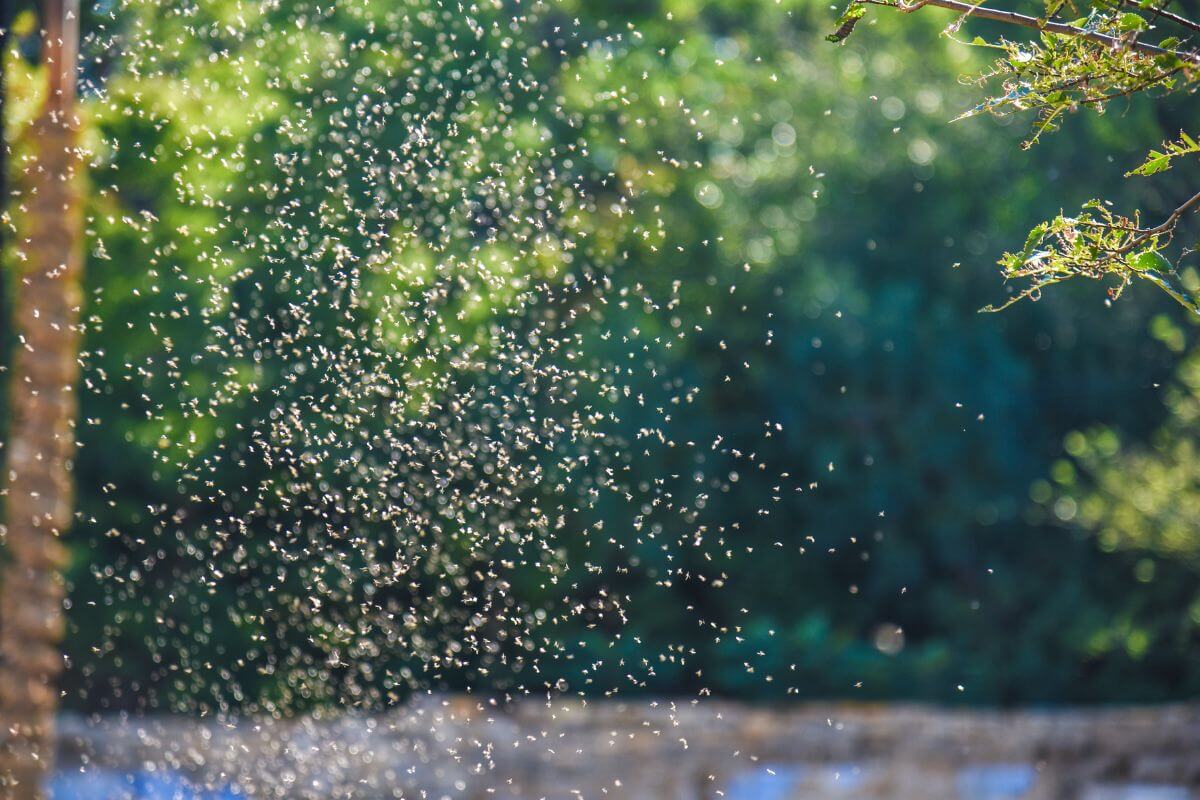
It is essential to take proactive measures to protect against Montana mosquito bites. Using insect repellent, wearing protective clothing, and eliminating standing water can help reduce exposure and health risks.
The impact of pesky insects cannot be ignored during Montana bug season. Mosquitoes, in particular, pose a significant threat to both humans and animals, carrying diseases like the West Nile virus.
The prevalence of mosquitoes in Montana makes bug control strategies all the more crucial.
By being aware of mosquito activity patterns and taking preventative measures accordingly, we can ensure a safer and more enjoyable bug-free experience.
With the impact of bug season on outdoor activities and agriculture, as well as potential health risks associated with mosquito bites, it is imperative that we prioritize bug control strategies.
Let’s stay informed, take necessary precautions, and make Montana bug season a time of enjoyable outdoor experiences without the irritating presence of mosquitoes.
Montana Bug Season FAQs
1. Are Mosquitoes a Big Issue in Montana?
Mosquitoes are relevant in Montana, particularly during the warmer months, but the extent of the issue varies by location and environmental factors.
Preventive measures like repellents, protective clothing, and avoiding peak mosquito activity can mitigate their impact.
2. What Bug Is Seen the Most in Montana?
The most common bug in Montana, particularly as an economic pest, is the Melanoplus grasshopper, which falls under the category of “spur-throated” grasshopper species.
These grasshoppers are known for their mixed diets of grasses and leafy forbs and often pose significant challenges to small grains and vegetable crops in Montana.
3. Which State Has the Worst Mosquitoes in the U.S.?
Florida is the U.S. state with the most significant mosquito issues, exacerbated by its growing population, climate change, and the influx of non-native, invasive mosquito species.
The state faces challenges with diseases like dengue fever and malaria transmitted by mosquitoes, leading to public health concerns.
4. When Are Bugs Most Active During the Year?
The majority of insects exhibit increased activity during the warmer seasons. When the temperature falls below freezing at 32°F, insects become largely immobile.
They begin to move sluggishly around 45°F, but it’s not until temperatures reach 70°F that they become fully active and functional.
If you want to learn more about Montana, Check out these articles:
- Should I Visit Montana?
- Discovering Moths in Montana
- Dealing with Stink Bugs in Montana
- Bug Bites in Montana
- Options to Get to Montana
- What Type of Climate Does Montana Have
- https://dphhs.mt.gov/publichealth/cdepi/diseases/westnilevirus
- https://www.montana.edu/historybug/med_ent/intro-chapter.html
- https://agrilifetoday.tamu.edu/2023/05/25/five-tips-to-protect-your-home-from-mosquitoes-this-summer/
- https://agresearch.montana.edu/wtarc/producerinfo/entomology-insect-ecology/Grasshoppers/MontanaGrasshoppers.pdf
- https://health.wusf.usf.edu/health-news-florida/2023-06-26/think-sharks-snakes-or-spiders-are-the-deadliest-critters-the-mosquito-would-like-a-few-words

